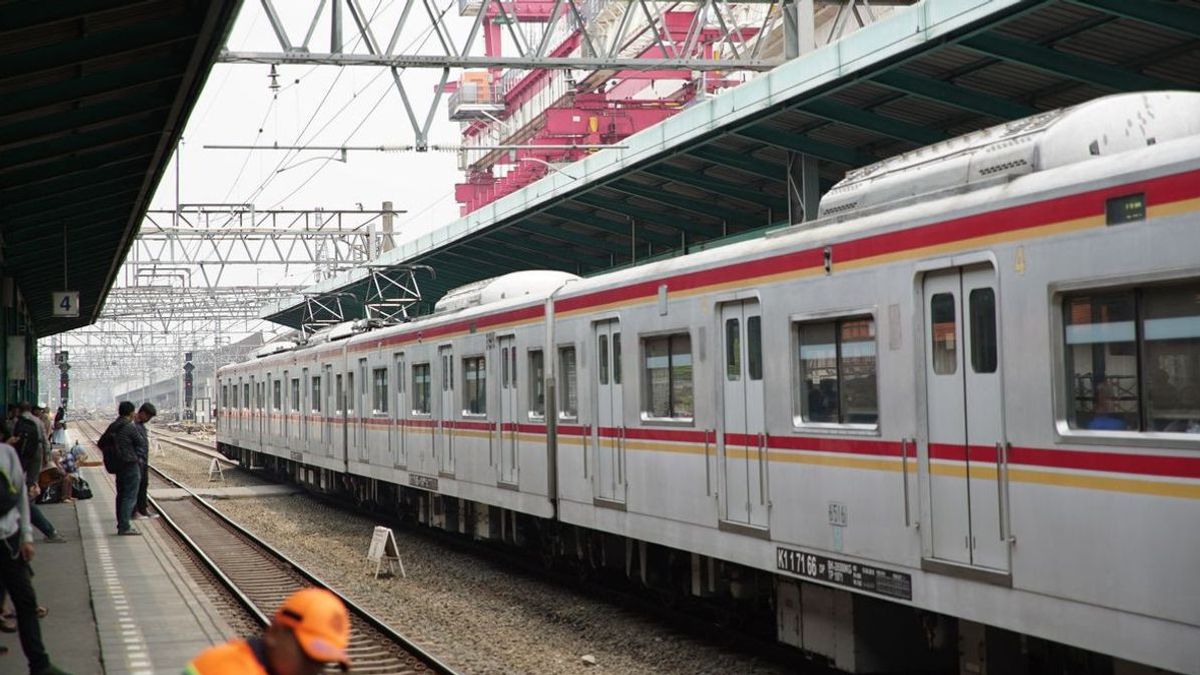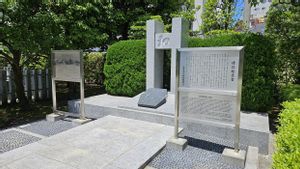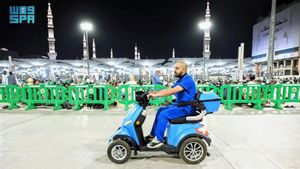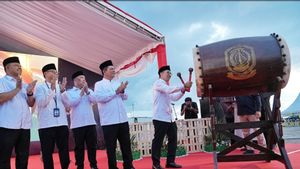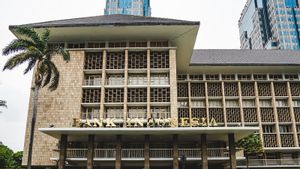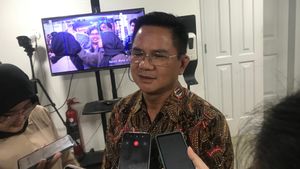JAKARTA - KAI Commuter noted that there was an increase in the number of passengers on the commuter line transportation mode this month compared to the previous one. In November, the number of users of this mode of transportation was recorded at 400 thousand people. This shows that the public has returned to their activities amid the COVID-19 pandemic.
"Data from the KAI Commuter shows that in November 2020 the volume of KRL users began to increase as people started to return to their activities amid the COVID-19 pandemic. Throughout this November, the volume of KRL users touched 400 thousand users on weekdays. This figure was the highest during the pandemic. COVID-19, or since March 2020. However, this number is only about 40 percent compared to the average daily volume of KRL users served by KAI Commuter before the pandemic, "said VP Corporate Communications of KAI Commuter Anne Purba in a written statement to reporters, Saturday, November 14th.
With the increasing number of users, KRL is anticipating by increasing the number of commuter line trips and restoring the operating hours of this mode of transportation from 04.00 WIB to 00.00 WIB every day. In addition, KAI Commuter has also operated 997 train trips per day.
"This number is more than before the pandemic where the KAI Commuter operated only 975 trips per day. With the addition of the number of trips and the normalization of operating hours, it is hoped that KRL users will be more flexible in planning trips so that they can avoid busy hours where users are sufficient. solid, "he said.
Anne explained that passenger movements are still focused during rush hour. Based on the data they have, on Monday, November 11, it can be seen that user movements are centered in the time range 07.00 and 08.00 WIB. At that hour, 72 thousand users were recorded using the commuter line mode of transportation.
Meanwhile, for the afternoon, user mobility is concentrated at 18.00 WIB or after hours of work home with more than 40 thousand users within one hour.
To anticipate congestion during peak hours, Anne urged the public to use commuter lines to take advantage of schedule flexibility by traveling outside of these peak hours.
"KAI Commuter also hopes that various parties will continue the method of regulating working hours according to shifts so that the mobility of workers can be divided into different time spans. Gradual work hours or according to shifts are also more possible with KRL operations that have returned to normal," he said.
In addition, in order to avoid congestion at stations during peak hours, users of this mode of transportation can view information on queuing conditions at stations via the KRL Access application, which is available for Android and iOS cellphone users. In addition, in this application, users can also see the current position of the train they want to ride, train schedules, and a number of other related information.
Anne also appealed to all prospective passengers and commuter line passengers, the additional rules imposed by the KAI Commuter still apply, including for the elderly.
Those aged 60 years and over, said Anne, can only use the commuter line outside of peak hours, from 10.00 WIB to 14.00 WIB. This clock setting also applies to passengers carrying large items which can interfere with the implementation of maintaining a safe distance on the train. Meanwhile for toddlers and children, it is still prohibited to use this mode of transportation.
In addition, passengers and officers still have to follow health protocols to prevent transmission of COVID-19. This rule is important to follow at the station as well as on the train.
"KAI Commuter also reminds users to be prepared for the rainy season and to bring additional equipment when leaving the house, including raincoats or umbrellas, and use non-slippery shoes," he said.
"Also remember to check daily weather forecasts before doing activities. Weather forecasts can be seen on twitter @commuterline every morning, as well as on various social media accounts and websites of the Meteorology, Climatology and Geophysics Agency (BMKG)," he concluded.
The English, Chinese, Japanese, Arabic, and French versions are automatically generated by the AI. So there may still be inaccuracies in translating, please always see Indonesian as our main language. (system supported by DigitalSiber.id)
